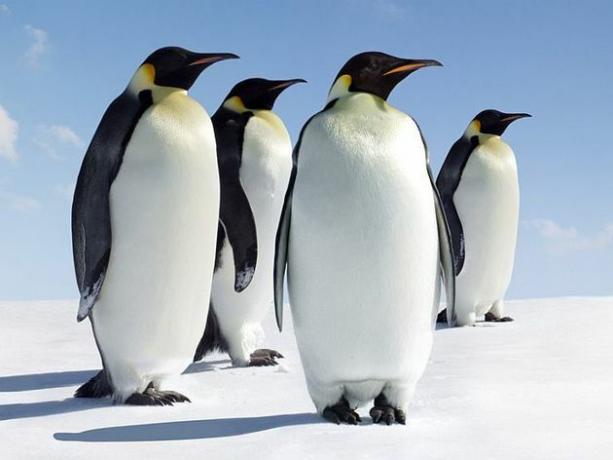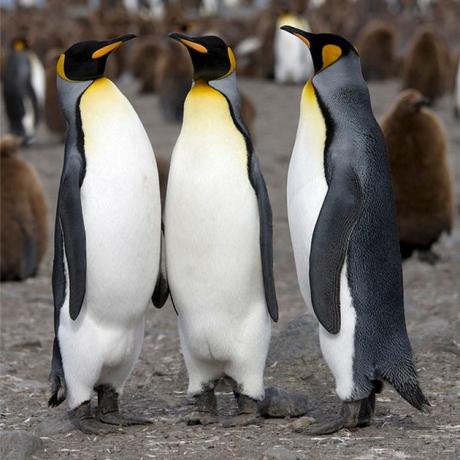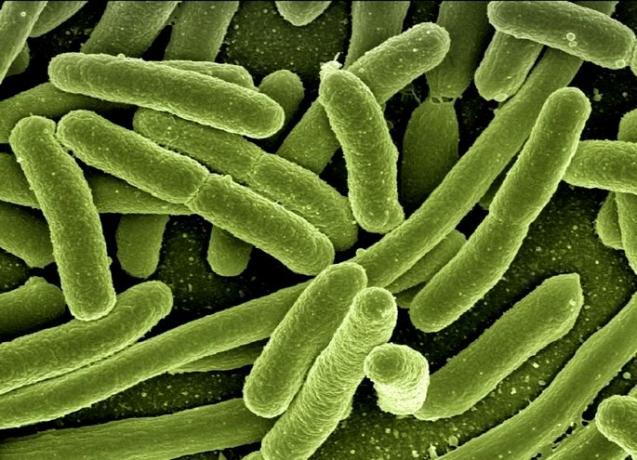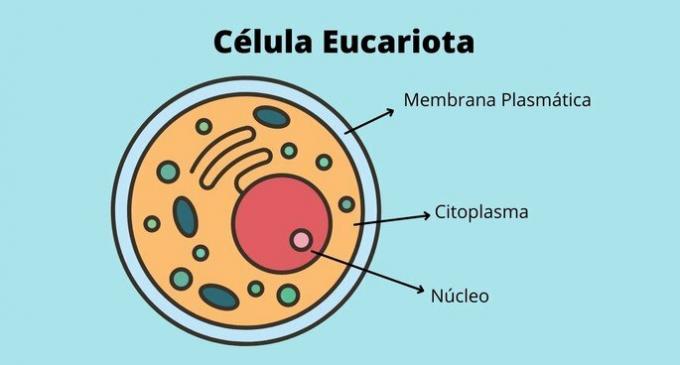O Penguin is a seabird of the family Spheniscidae who lives mainly in Antarctica. Some species live in the Falkland and Galapagos Islands regions.
Penguins play a very important role in the ecosystem in which they live. They are part of a food web helping to control different species and serving as food for other animals.
Physical characteristics of penguins

Penguins have very striking physical characteristics. Its own way of walking and the short wings stand out.
They have short wings, which are the result of a transformation process for survival in aquatic life. They are not suitable for flying in the air, but they are very important in swimming. The wings are used as fins. In addition, the feet have membranes that help in swimming.
The penguins' body has a thick layer of fat, which serves as a thermal insulator, helping to control body temperature.
Penguins have feathers that have a secretion of oils that serve as waterproofing against the low temperatures of the places they live.
The black and white colors help in the camouflage used to dribble the
predators. The black back, when viewed from above, disappears when swimming at depth. The white chest, on the other hand, is confused with surface light, when seen from below.Penguin reproduction
Penguins are loyal to their partners in most species. During the breeding period, the same couple joins each season. The meeting is marked by the nuptial dance, which represents the couple's union. The male offers stones to build the nest and with the female's acceptance, copulation occurs.
the penguins are oviparous animals. The egg hatching time takes an average of 5 to 6 weeks. In the period when the egg is laid, the search for food is alternated between the male and the female so that the egg is not left alone and is a target for predators.
The breeding period takes place in breeding colonies, forming groups with thousands of penguins.

After birth, the parents help with feeding and protect the offspring from predators. By changing the fluff and reaching a size close to that of their parents, the puppies learn to swim and look for food on their own. After this learning period, penguins no longer receive help from their parents.
penguin species
Worldwide, it is estimated that there are more than 17 species.
Below is a list of the most popular penguin species.
1. Emperor penguin (Aptenodytes forsteri)

The Emperor Penguin is the tallest and heaviest animal of its kind. Its height can exceed 1.2 m and weigh up to 45 kilos. Its back and head are black, its chest is white and slightly yellowish near the head and its beak is orange. Presents a well-defined line in the division of colors.
Its natural habitat is the icy waters of the Antarctica. The Emperor Penguin supports temperatures below minus 50°C.
The emperor penguin's food is based on marine animals, especially fish and crustaceans. Due to the layer of fat it presents, it can withstand more than 100 days of fasting.
2. King penguin (Aptenodytes patagonicus)

The king penguin is the second largest penguin among the known species. It can measure an average of 90 cm and weigh up to 17 kilos.
Its back is predominantly gray, its head is black, its ears and beak are orange and its chest is yellow and white.
They live mainly in the Antarctic area and on sub-Antarctic islands. They can also be found in South Australia and New Zealand.
King penguins feed mainly on small marine animals. They use their long robust beak to eat crustaceans and molluscs attached to the stones.
3. Royal penguin (Eudyptes schlegeli)

The golden penguin is another species that lives in the waters of Antarctica. Their height is on average 70 cm and they weigh approximately 6 kilos.
They have a black back and a white chest. Its face is white, the beaks are shorter and orange in color. Unlike other penguins, they have orange and yellow feathers on their heads.
The royal penguin spends most of its time in the water looking for food.
The breeding period of this species occurs only on Macquarie Island.
4. Galapagos Penguin (Spheniscus mendiculus)

The Galapagos penguin is the only species that lives along the equator, making it the only penguin to be found in the northern hemisphere.
Smaller in size, these penguins are approximately 50 cm and weigh about 2 kilos. Its body, head and beak are black. Only his chest is white in color.
The Galapagos penguin feeds primarily on small fish. Its swimming is very agile, contributing to food hunting.
It is an animal threatened with extinction, being classified as endangered, as they have a population of less than 2,000 individuals.
Penguins on the Brazilian coast
The presence of penguins on the Brazilian coast has become increasingly common. The most frequent cause is the search for food, especially by the younger penguins that get lost from their group.
The species that usually come to Brazil are those that live in a temperate climate, so they take the opportunity to escape the icy waters. The Magellanic penguin is the species that most visits the Brazilian coast.
The most frequented place for penguins is the south coast, especially in Rio Grande do Sul and Santa Catarina. Some arrive as far as the Southeast, but due to wear and tear, they arrive thin and tired.
The period that penguins reach the Brazilian coast is between the months of July and September.
Penguin Curiosities
- Penguins help identify the climate changes and the quality of the local environment, especially related to water temperature.
- The average lifespan of a penguin is 30 years.
- Feather changing takes place twice a year, and during this feather changing period, penguins do not enter the water.
Also read about:
- birds
- Whale
- orca whale
- humpback whale
- Polar Bear
- food web


